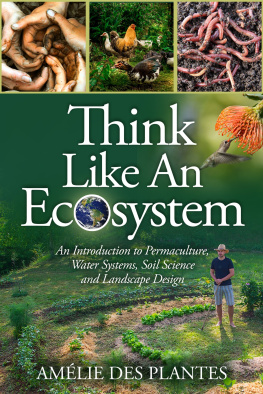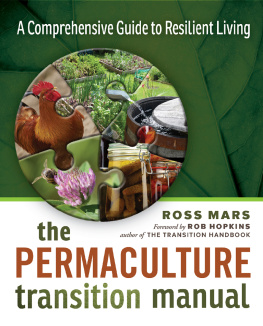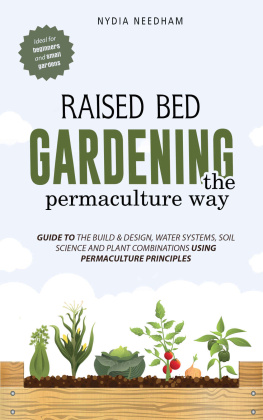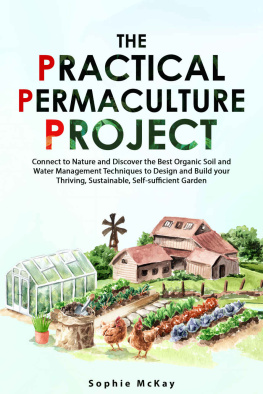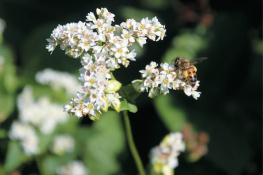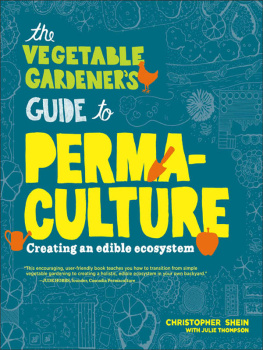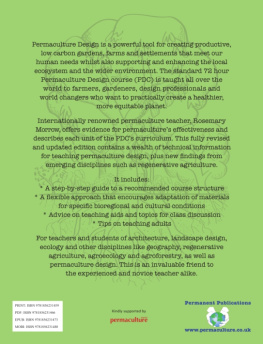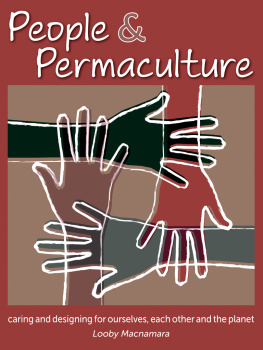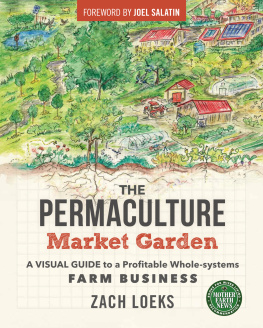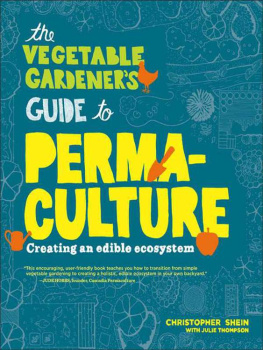Lots of things baffle me about humanity, but the biggest is how wasteful we are. People super-size everything without being able to finish it. We buy new TVs, not because the old one was broken but because we want a bigger one. Consumerism is eating the planet.
Its estimated that 30 to 60 percent of our household water is used to irrigate outdoor areas, and 50 percent of that is wasted in runoff (WaterSense, n.d.). In the US, between 125 and 160 billion pounds of food is wasted annually (FoodPrint, 2021). Imagine what we could achieve if we started using these resources.
Though the problems of the world are increasingly complex, the solutions remain embarrassingly simple.
Bill Mollison
I was most frustrated at university. Coming from a farming background, I was used to making the most of everything the land could give us. People around me were incredibly wasteful and I didnt want to fall into the same habits. One of my professors was like-minded, and it was thanks to her that I started to pay more attention to renewable, sustainable ecosystems. Her enthusiasm in my determination helped me to understand the concept of making the most of what we have, ironically, something I had had a taste of throughout my childhood, but perhaps at that age, I got the feeling that it could be taken a few steps further.
My professors wise words were based on a practice from the 70s. She explained that we are so focused on creating beds, irrigation systems, and pest-control methods that we forget how nature does this without intervention. Before 650600 BC, there was no money and people grew and exchanged goods. We arent about to go back to such a system, but like countless generations, tribes, and cultures before us, we can create a self-sustaining environment with what nature provides us. She was talking about permaculture.
On her 3,000 square feet of land, my professor was letting nature do what nature does best: using natural water reservoirs, regenerating soil fertility, and allowing animals to control pests as it should be. Whats more, she was able to enjoy freshly grown food.
Permaculture is not the same as organic gardening. Both systems are used to grow food, but permaculture goes beyond organic gardening. It involves design and greater responsibility for the waste produced. By mimicking nature, permaculture aims to take advantage of natural resources to provide a sustainable habitat for humans and animals. It sounded simple enough, so during my summers at home, I started to implement the principles of permaculture on a small patch of land on the farm.
When I first began researching permaculture, I was overwhelmed by how complex some people made it. I saw chemical formulas for soil that were enough to put many people off. There was a lot of confusion about what permaculture actually was. Like myself, there seemed to be some confusion between permaculture, organic gardening, and other traditional farming practices. I started peeling back the information, leaf by leaf so to speak, in order to begin my new passion the right way.
Not everything went the way I had initially hoped. There were moments of confusion, even frustration, but the little breakthroughs motivated me to keep going. It was what looked like failures that taught me more about the improvements I could make. Dont worry, I will confess some of my less successful experiences so that you know not to make the same errors!
Five years later, our sustainable ecosystem is providing more benefits than we could have ever imagined. Not only have I learned about things like closed-loop systems and zoning, but now my children are learning the same techniques. We feel healthier, happier, more purposeful, and instead of complaining about the direction the world is going, we feel that our simple solution is making a positive difference.
After founding Ecological Food Forest in 2020, I was thrilled to discover how many like-minded people needed help and advice, whether they had already begun or had no idea where to start. It was clear: Now is the perfect time to share my knowledge and passion so that you can enjoy the same pleasure that my family gets out of permaculture.
We will look at all the principles of permaculture, from observing your environment to planning the different zones. We will learn how to use rainwater, take care of your soil, plant the right plants, and integrate animals. And we are going to do this without the unnecessary jargon that may have previously put you off. Everything we practice will take into consideration the ethical, social, and communal aspects of permaculture.

